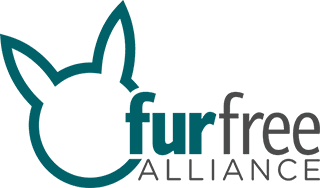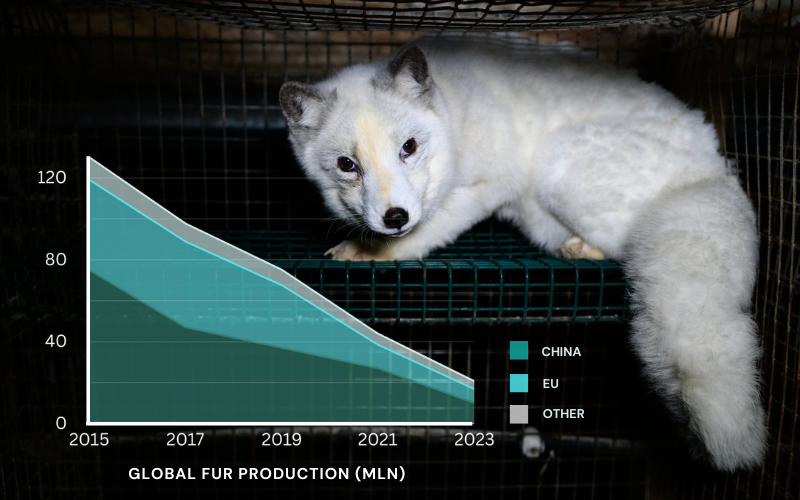
Fur going out of fashion as production hits decades-low
Fur is increasingly falling out of favour, and that’s good news for animals. In 2023, global fur production plummeted by nearly 40% compared to the previous year, following a decade-long downward spiral that saw the industry shrink by a staggering 85%. These statistics are not just numbers: they represent millions of mink, foxes, and raccoon dogs spared a miserable life and painful death on a fur farm.
As top fashion houses gravitate away from animal fur and governments shut down cruel fur farms, the steep decline of the fur industry – once synonymous with luxury – is a testament to what can be achieved for animals with strategy and international collaboration.
Demand for fur has dipped in recent years, driven by conscious consumers rejecting cruelty and animal advocates adopting new strategies. Trailblazing fashion designers such as Gucci, Armani and Michael Kors publicly abandoned animal fur, after working with the global network of the Fur Free Alliance, marking a turning point for cruelty-free fashion – today over 1600 brands have pledged to go fur-free.
A decade of targeted campaigns, exposing the grim realities of the fur trade while highlighting the consumer’s growing appetite for ethical products, has changed the conversation. Today’s fashion labels recognise that luxury no longer stands for cruelty and prioritise animal welfare policies and innovative alternatives. Despite this progress, there is still work to be done while fur brands, such as Fendi, Louis Vuitton and Woolrich, continue to profit off of the backs of animals.
Besides corporate wins, government bans and falling demand have forced fur farmers worldwide to leave the business. In just five years, the number of fur farms in the European Union fell from 4,350 in 2018, to 1,088 in 2023. Even in China, the world’s largest producer of fur, production has dropped by more than half since 2022.
It’s clear the tide is turning against fur farming, as animal advocates continue to push for prohibitive laws to protect animal welfare, public health and the environment. While discussions about a Europe-wide fur ban are ongoing, last year Romania was the latest country to outlaw fur production over welfare concerns.
The Fur Free Alliance, a coalition of more than 50 animal protection groups around the world, brings campaigners together to work more effectively against the international fur industry. In over 25 years of existence, the network has helped to ensure more than 25 countries have introduced legislation to prohibit or restrict fur production on the basis of animal welfare and public morality. Work continues in multiple countries where proposals for fur farming bans are being considered.
While the fur trade is fading, the work is far from over: the suffering of 20 million animals each year remains 20 million too many. By continuing to hold brands accountable and advocating for legislative change, we can ensure more meaningful progress toward ending the global fur trade once and for all.




